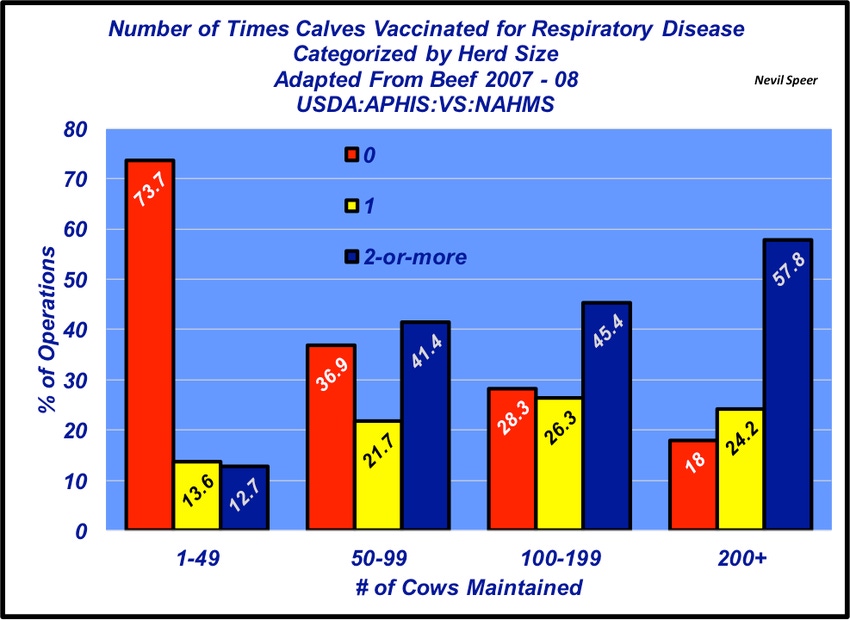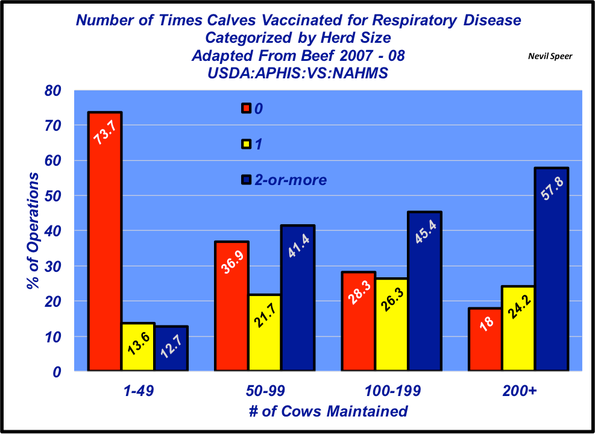Here’s why order buyers pay less for high-risk calves
April 25, 2016

During the past several weeks, Industry At A Glance has focused on BVD. It’s been highlighted as the result of a recent one-day industry symposium on BVD< in Kansas City hosted by the National Institute for Animal Agriculture, in partnership with the National Cattlemen’s Beef Association. The purpose of the symposium was to address producer education, prevention strategies and discuss industry-wide solutions going forward.
BVD is an important and costly disease in the beef industry. There are a whole host of symptoms associated with BVD, including diarrhea, decreased milk production and reproductive disorders. However, perhaps most important is BVD’s role as an immunosuppressant and subsequent risk factor for bovine respiratory disease (BRD) in newly-weaned and/or received feeder cattle.
Because of to the interactive nature of various stressors and risk factors, quantification of individual risk relative to BRD is very difficult. Stressors, either individually or in combination, cause several important responses in newly-arrived feedlot calves. Physiological response results in some degree of immunosuppression. However, BVD further confounds those complications. Therefore, exposure to one or more of persistently infected (PI) calves in a set of newly-weaned and/or received feeder cattle can prove especially challenging.
The industry has some work to do from an educational standpoint around BVD. Additionally, Industry At A Glance has also featured some discussion around the need for improved vaccination and calving season management to prevent PI calves.

Meanwhile, though, pre-weaning and pre-shipping prevention protocols can help to minimize morbidity risk of feeder cattle and buffer against negative effects associated with potential exposure to PI during the marketing process. Accordingly, this week’s illustration features the current status of respiratory disease vaccination, categorized by herd size, among U.S. beef producers.
What’s your perception of general prevention trends in the U.S beef industry? Are you vaccinating your calves prior to weaning and/or shipping? What steps are you taking to reduce BVD and BRD risk in your operation? Leave your thoughts in the comments section below.
You might also like:
How to control sucking & biting lice on cattle
When is the best time to wean? It might be younger than you think
Late-gestation trace mineral supplementation shows promise
7 tips for limiting the spread of invasive species in your pastures
About the Author(s)
You May Also Like


.png?width=300&auto=webp&quality=80&disable=upscale)


